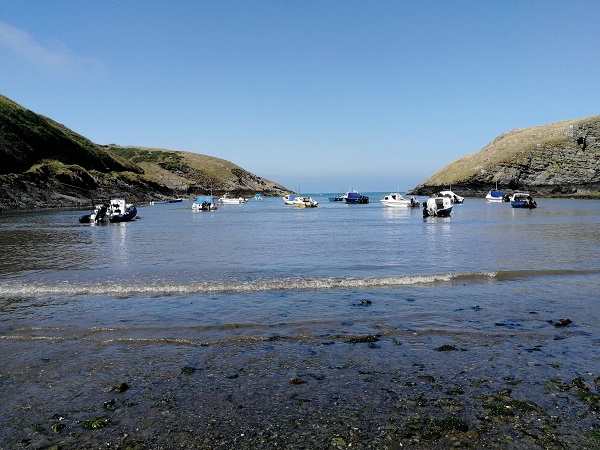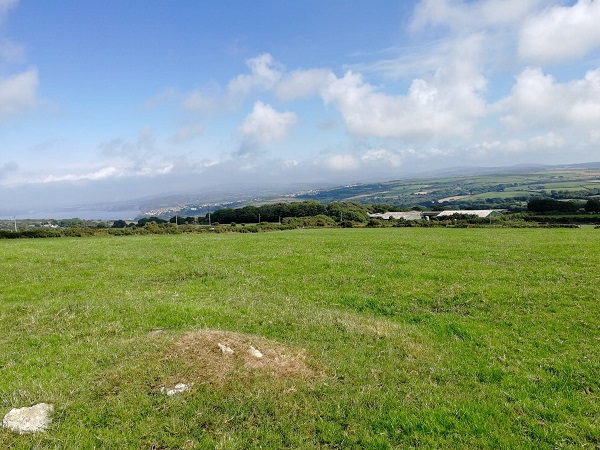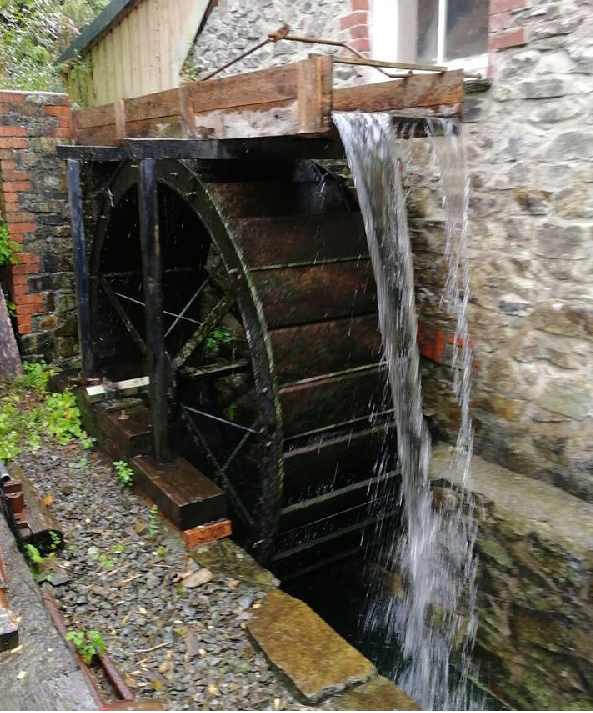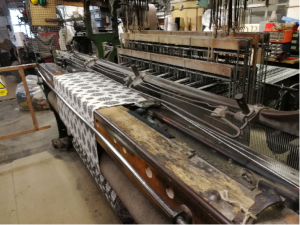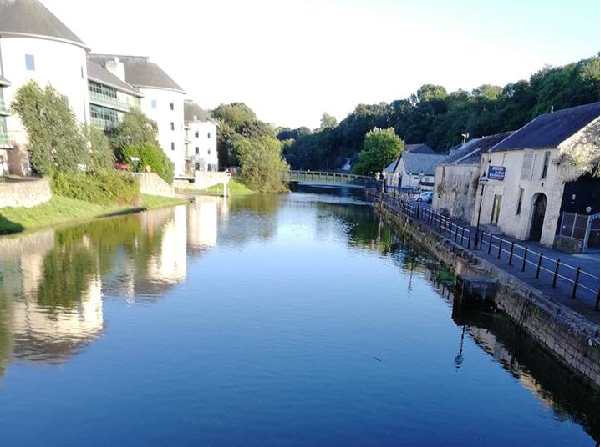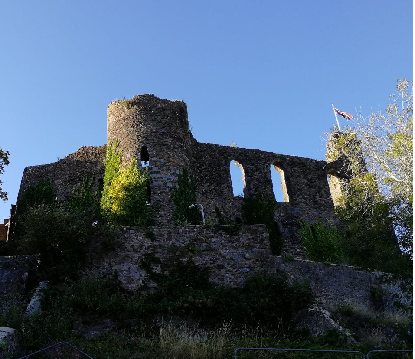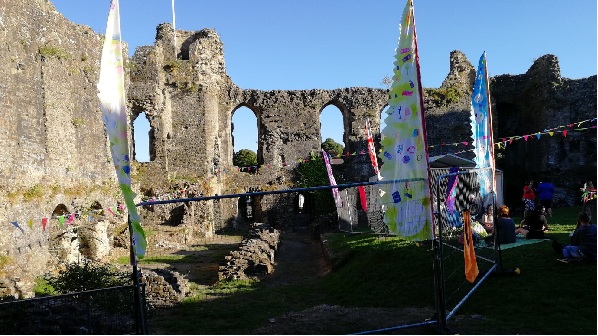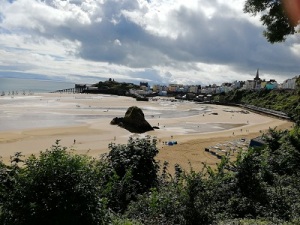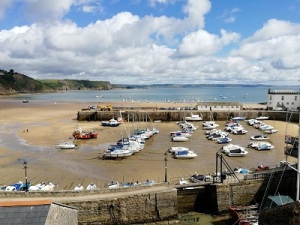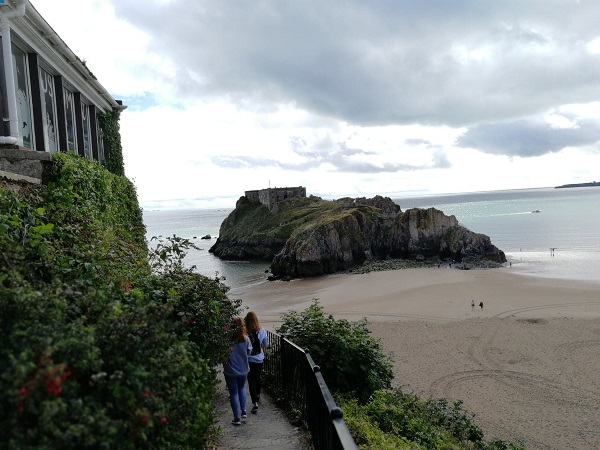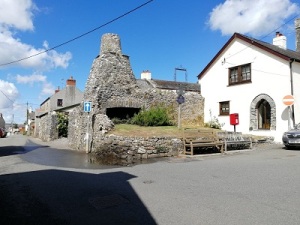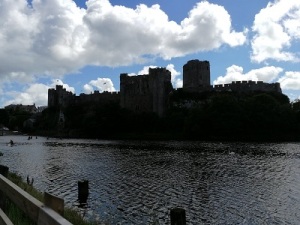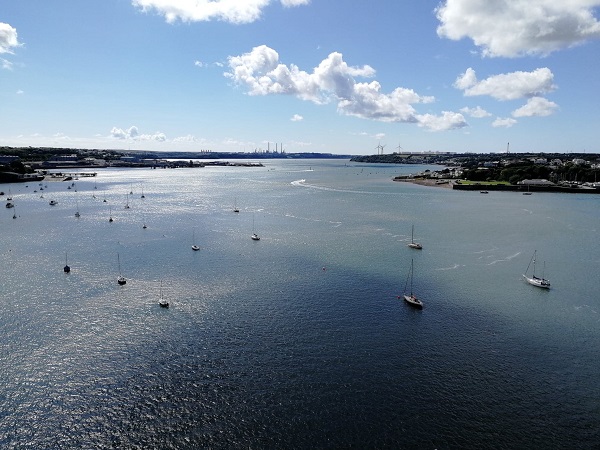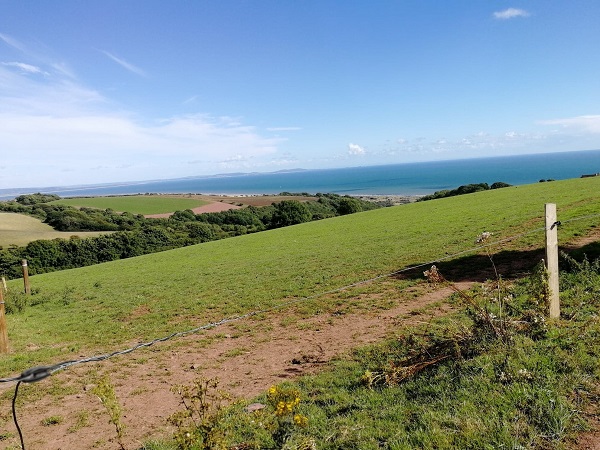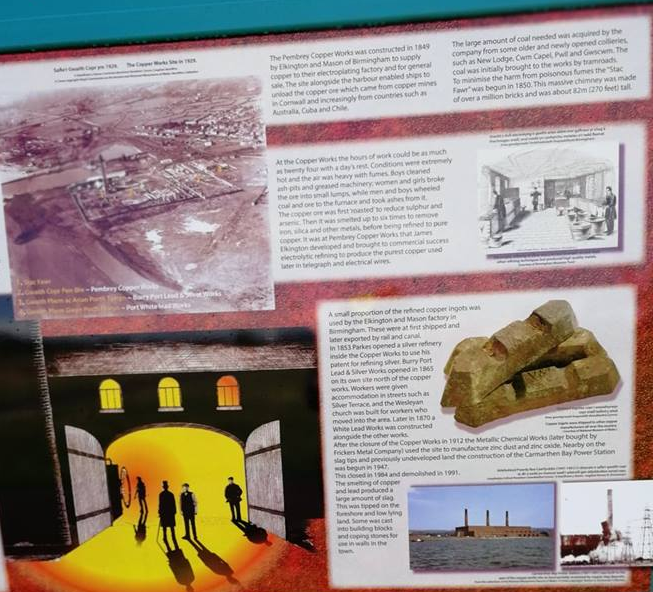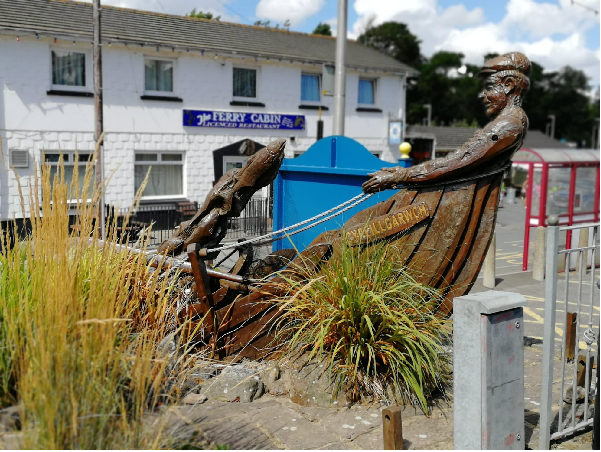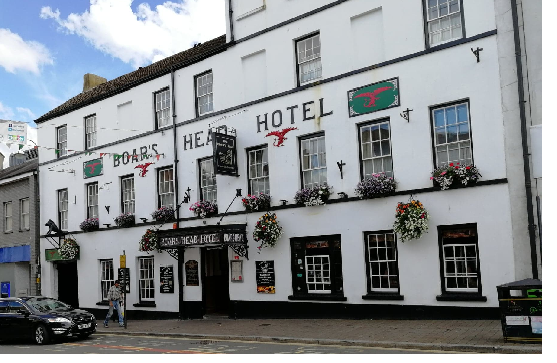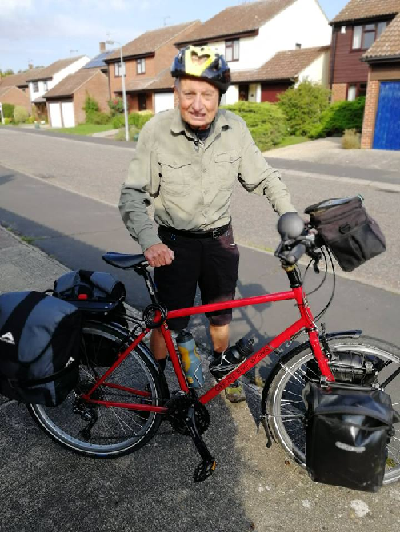
With panniers all loaded up again, left home to discover new territory. I had only been to Irish cities so was looking forward to seeing what rural Ireland was like. On a bike you are part of the everyday world. I had gone to Wales with some preconceptions but had found it a more relaxed society than I had expected, particularly the further west I went.
First I had to get back to Fishguard again, a journey that would take most of the day, with clapped out trains at both ends and the most modern carriages between. Always enjoyed this part of the journey. I always pre-book a seat, the scenery is interesting and it is a chance to relax after the hectic attempts to clear up everything before leaving home. Now it was too late to do anything more and I could even have a glass of wine if I fancied it.
Went, as usual, to the back of the train at Braintree where there were seats that could be pushed back to accommodate a bike and pushchair – gone. Sudden realisation that, at last, there was new train stock. Every time the train franchise came up for offer there was a promise of new stock which never happened and it always the same foul toilets with never the full compliment of toilet flush/water/soap/dryer in operation. The biggest mistake was to take soap before checking that the water was working. (Perhaps you need to be of a certain age to be fixated about train toilets).
On the cycle for the inevitably eventful cycle across London. Found a way down through little lanes to super cycle highway along Embankment with some closed lanes near the station now open again. Went along opposite side of Serpentine this time and had close up view of The Mastaba looking magnificent in the sun (see Day 9 for more information).
Everything went well. I was allowed on the train from Paddington to Cardiff early giving me plenty of time to hang up the bike. The train connection at Cardiff was perfect and I put my bike in the cycle space where it was joined by several others. The train to Fishguard became busier as we passed through the towns that I had cycled through so recently. A passenger sitting next to me was a regular commuter into Swansea. We talked about Wales and the castles. He said that the accents in S.W. Pembrokeshire were more English than anywhere else in Wales. It was, he explained, because that area had been colonised by the Normans when the castles were built and they continued to bring in English labour. Just before he got off he asked where I was going. When I said Fishguard he paused and then said, sympathetically, that it takes a long time. I realised I still had 40 minutes on a train which travelled cautiously, with fewer and fewer passengers, through the farmlands but it been an easy event-free journey so far.
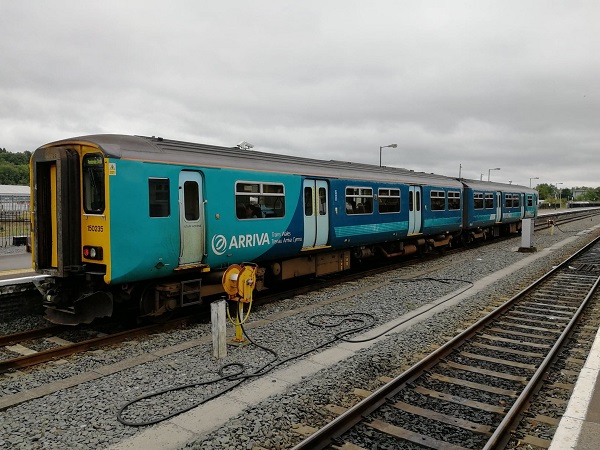
The train suddenly braked and the driver hooted once and then with a succession of hoots, and there was the sound of the train hitting several objects. The conductor went into the drivers cab and returned walking down the carriage to the rear saying “dogs”. After several minutes’ delay, as he returned to the driver’s cab he told us that the vets were coming and, after an apology for the delay from the driver, we set off again. I usually get off last with my bike so as not to be an inconvenience and so spoke to the conductor who was coming from the driver’s cab. He explained that there had been a hunt and the pack had gone over the tracks too quickly for the driver to stop. I asked how the driver was and he said he had been shaken up but would be okay.
The hotel that night was in Goodwick, close to the train and ferry. Shown room and presented with key. It was in a small, single room on the top floor, somewhat sparse but with a very comfortable bed – better than camping. They did not do evening food so asked for recommendation and the barman pointed to a customer who recommended the Hope and Anchor across the road. The barman grinned and said the customer worked there. They had a grill restaurant in a basement, the food and presentation were high class, and I had good smokey bean chilli.

